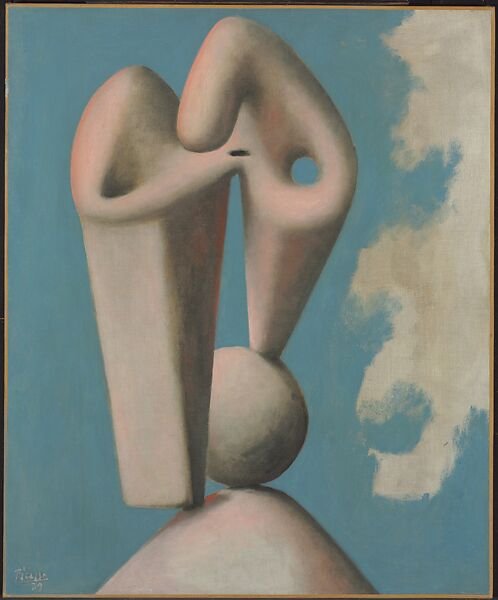Picasso - Art & Innovation
The year 2023 marks the 50th anniversary of the death of Pablo Picasso, an artist who left an indelible mark on the world of art through his innovative and ever-evolving approach to creativity. The Cincinnati Art Museum is commemorating this milestone with a remarkable exhibition, "Picasso Landscapes: Out of Bounds." This groundbreaking display offers a unique perspective on Picasso's lifelong engagement with landscapes, featuring paintings and sculptures from 25 collections across the United States and Europe. The exhibit highlights how Picasso harnessed the power of place, environment, and the interface between humanity and nature to push the boundaries of artistic expression. In this blog post, we'll delve into Picasso's influential legacy and explore the art therapy potential of diverse painting techniques and styles.
Picasso: A Pioneer of Art
Pablo Picasso, often referred to as a 20th-century luminary, is celebrated for his revolutionary approach to art. Here are some key facets of his method:
Cubism: Picasso's co-founding of the Cubist movement, alongside Georges Braque, shattered conventional perspectives. Cubism deconstructed objects into geometric shapes, pushing the boundaries of artistic representation.
Innovation: Picasso was a relentless experimenter, exploring a wide range of styles and mediums. This ceaseless exploration yielded a diverse body of work, including paintings, sculptures, ceramics, drawings, and more.
Color Exploration: His bold and emotive use of color defied naturalistic norms, conveying emotions and depth in a non-realistic manner.
Expressive Themes: Picasso's art mirrored his life experiences, ranging from playful whimsy to profound introspection, influenced by personal and societal circumstances.
Rebellious Spirit: Picasso was a master at distorting figures and objects, challenging viewers to explore deeper meanings within his art.
Multidisciplinary Approach: Beyond painting, Picasso ventured into sculpture, ceramics, and stage design, influencing various art forms.
Endless Evolution: Picasso's career featured distinct artistic periods, such as the Blue and Rose periods, showcasing his adaptability and artistic growth.
The "Out of Bounds" Picasso Exhibit
At the Cincinnati Art Museum, the "Picasso Landscapes: Out of Bounds" exhibition offers a glimpse into Picasso's engagement with landscapes. The artist used these settings to establish himself in new surroundings, explore different styles of painting and sculpture, and push the boundaries of art.
This display not only commemorates Picasso's legacy but also emphasizes the elemental role of place, environment, and the interplay between humanity and nature in his work. Through his representations of landscapes, Picasso engaged in dialogues with artists from previous centuries, embedding himself within the European painting tradition while forging his unique artistic path.
Head: Study for a Monument - Pablo Picasso (Spanish, Malaga 1881–1973 Mougins, France)
Art Therapy and Diverse Painting Techniques
Art has always been a potent form of therapy, enabling individuals to express their emotions, step outside their comfort zones, and transcend personal boundaries. Picasso, much like individuals seeking creative expression, employed diverse painting techniques and styles to convey emotions, break free from creative constraints, and foster personal growth.
Emotional Release: Diverse painting techniques allow individuals to externalize their emotions and connect with their inner feelings. Just as Picasso used color to convey emotions, your artistic choices can become a reflection of your inner world.
Creativity Unleashed: Art therapy encourages creative exploration, and experimenting with various styles can unlock untapped artistic potential, just as Picasso's ceaseless experimentation drove his creative evolution.
Breaking Boundaries: Stepping outside your usual style, much like Picasso's groundbreaking Cubism, challenges the norm and fosters personal growth by inspiring new perspectives and artistic approaches.
Mindfulness and Self-Reflection: Engaging in art therapy through painting encourages mindfulness and self-reflection, enhancing self-awareness and self-acceptance.
Communication Beyond Words: Painting allows individuals to communicate complex emotions beyond the limits of verbal expression, much like Picasso's abstract and distorted figures conveyed deep meanings without traditional language.
Personal Growth: Picasso's multidisciplinary approach, influencing various art forms, mirrors the personal growth that can be achieved through exploring different painting techniques and styles. This journey broadens your artistic horizons and encourages adaptability.
"Picasso Landscapes: Out of Bounds" at the Cincinnati Art Museum is more than an exhibition; it's an exploration of an artist's pioneering spirit and an invitation to discover your creative potential. Just as Picasso harnessed the power of landscapes and diverse techniques to push the boundaries of art, individuals can use painting to express emotions, break free from creative constraints, and foster personal growth. Painting is a powerful vehicle for self-expression, enabling individuals to communicate their deepest emotions and experiences in a profound and healing way. Picasso's legacy lives on not only in his art but in the transformative potential of diverse artistic expression.




